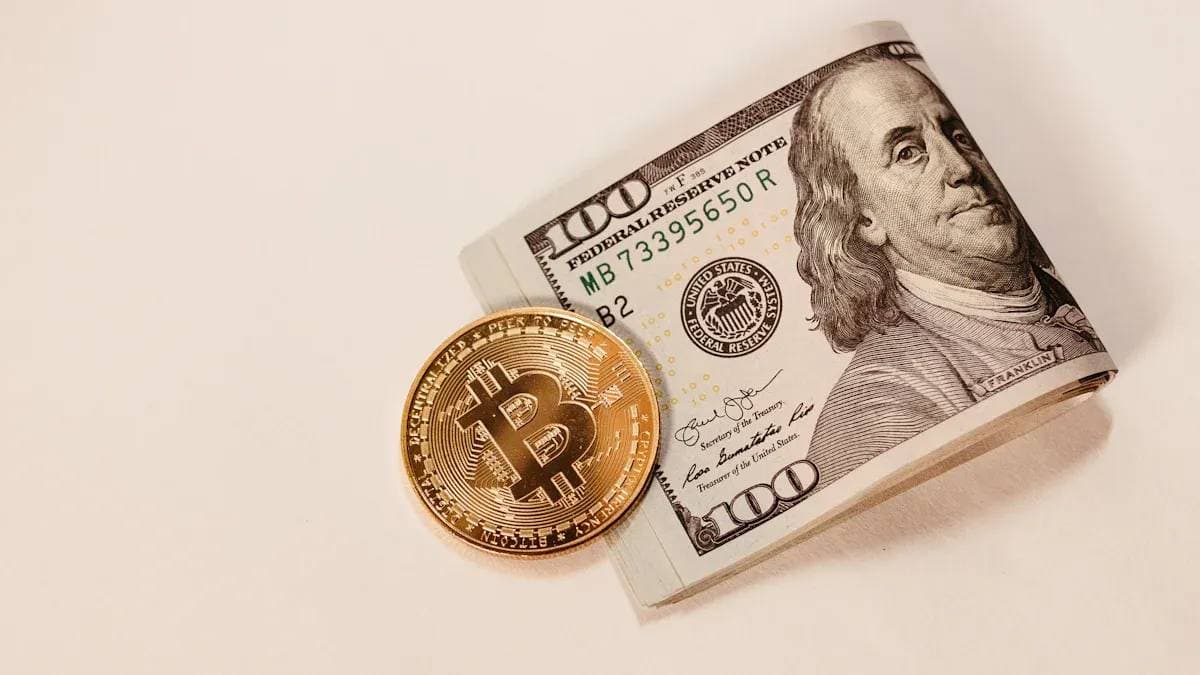- EasyCard
- Trade
- Help
- Announcement
- Academy
- SWIFT Code
- Iban Number
- Referral
- Customer Service
- Blog
- Creator
Methods and Precautions for Electronic Transfers from Canada to the United States
Electronic transfer from Canada to the United States is a convenient and quick way to send money. Especially through Interac e-Transfer, users can directly complete the transaction using the recipient’s email address or phone number. Understanding the remittance process, fees, and required documents can help users complete the transfer more smoothly. BiyaPay also provides an efficient and convenient cross-border remittance solution to meet the needs of different users.

How to Use Interac e-Transfer to Send Funds from Canada to the United States?
Interac e-Transfer is a widely used payment method in Canada, and users can send funds to U.S. accounts through this system. However, unlike transfers within Canada, international electronic transfers involve foreign exchange conversion and additional fees. Therefore, it is necessary to understand the specific process before operating.
Firstly, the remitter needs to choose a financial institution or remittance service provider that supports international Interac transfers. In most cases, major banks in Canada support such transactions, but the specific policies of different banks may vary.
Secondly, the remitter needs to provide basic personal information and identity verification documents, such as a passport, driver’s license, or proof of address, to meet the compliance requirements of the bank and the payment platform. Once the account registration is completed, users can use the recipient’s email address or phone number as identification information for the transfer.
The limits of Interac e-Transfer vary among different banks. For example, at CIBC, the limit within 24 hours is CAD 3,000, and the limit within 7 days is CAD 10,000. Since foreign exchange rates fluctuate daily, it is recommended that users check the exchange rate situation before the transaction to ensure they get the best price.
How to Confirm the Status of an Interac e-Transfer?
To ensure that the funds arrive in the account smoothly, users can query the transaction status through their bank accounts or online payment platforms.
After the remittance is successful, the system will send an email notification to the remitter, which includes the tracking information of the transaction. After the recipient accepts the funds, the remitter will also receive a confirmation email to ensure that the transaction has been completed.
If the funds do not arrive in the account on time, it is recommended that users check the transfer history to see if the transaction has been successfully processed. In some cases, the bank may temporarily freeze or reject the transaction due to incorrect information, account restrictions, or other compliance issues. At this time, the remitter can contact the bank’s customer service or the support team of the payment platform for further assistance.
Which Accounts Can Be Used for Interac e-Transfer?
Users can send Interac e-Transfers from accounts at most financial institutions in Canada, including checking accounts, savings accounts, and some credit card accounts. However, not all credit cards from banks support this function. Therefore, it is recommended to consult the bank before using a credit card for remittance.
For the recipient, they must have an eligible financial institution account to accept the Interac e-Transfer and agree to the transaction terms. Some banks or payment service providers may charge additional receiving fees. Therefore, the recipient should confirm the relevant costs with the bank before the transaction.
In addition, in some cases, the recipient may need to provide additional identity verification, especially when the single remittance amount is large. To avoid transaction delays, it is recommended that both the remitter and the recipient prepare the required identification documents in advance.
How to Ensure the Security of Interac e-Transfer?
With the popularity of electronic payments, ensuring the security of personal information and funds has become particularly important. To prevent fraud or account theft, Interac e-Transfer has adopted multiple security measures, including:
End-to-end encryption: All transaction data will be protected by advanced encryption technology to prevent information from being intercepted by hackers.
Two-factor authentication (2FA): When users conduct high-value transactions, they may need additional security verification, such as SMS verification codes or email confirmations.
Transaction monitoring: Banks and payment platforms will monitor transactions in real-time and automatically trigger security checks when suspicious activities are detected.
To improve the security of personal accounts, users should avoid making remittances in public Wi-Fi environments and regularly check the transaction records of their bank accounts to ensure that all transactions are authorized by themselves.
What Problems May Arise During the Transfer Process?
During the cross-border remittance process, problems such as delayed funds, failed transactions, or frozen accounts may occur, affecting the progress of the transaction.
Delayed funds are usually caused by factors such as bank processing time, exchange rate conversion, or system maintenance. If the remittance does not arrive in the account on time, it is recommended that users first check the transaction status and wait patiently for the bank to process it.
Transaction failures may be caused by reasons such as incorrect account information, exceeding the remittance limit, or violating anti-money laundering regulations. In this case, users need to contact the bank or the customer service of the payment platform to obtain further solutions.
Account freezes may occur when the bank detects suspicious transaction activities. To avoid such problems, it is recommended that users report to the bank in advance before making large-value transfers and ensure that all the information provided is true and accurate.
How to Reduce the Fees of Interac e-Transfer?
The fees for cross-border electronic transfers may include bank handling fees, foreign exchange conversion fees, and additional fees charged by the receiving bank. The charging standards of different banks and payment platforms may vary. Therefore, users should compare when choosing a remittance method.
To reduce fees, users can choose remittance service providers that offer favorable exchange rates and low handling fees. For example, some payment platforms may offer more competitive exchange rates than banks and reduce hidden fees.
In addition, users can also reduce additional bank charges by choosing to remit during off-peak hours or by combining multiple small transactions. In some cases, using a bank account for direct transfer instead of credit card payment can also reduce additional handling fees.
Conclusion
Electronic transfer from Canada to the United States is an efficient way to transfer funds. Especially through Interac e-Transfer, users can complete transactions quickly and safely. However, before using this service, understanding the remittance process, account requirements, security measures, and fees can help users complete the transaction more smoothly.
If you are looking for an efficient, secure, and fee-transparent international remittance method, BiyaPay may be a good choice. It uses local remittance methods, not only with no limit on the remittance amount but also covering most regions and countries around the world, ensuring the rapid arrival of funds and effectively reducing handling fees and exchange rate losses. Whether for individual users or enterprises, choosing the right remittance method can make cross-border transactions smoother.
*This article is provided for general information purposes and does not constitute legal, tax or other professional advice from BiyaPay or its subsidiaries and its affiliates, and it is not intended as a substitute for obtaining advice from a financial advisor or any other professional.
We make no representations, warranties or warranties, express or implied, as to the accuracy, completeness or timeliness of the contents of this publication.




Contact Us
Company and Team
BiyaPay Products
Customer Services
is a broker-dealer registered with the U.S. Securities and Exchange Commission (SEC) (No.: 802-127417), member of the Financial Industry Regulatory Authority (FINRA) (CRD: 325027), member of the Securities Investor Protection Corporation (SIPC), and regulated by FINRA and SEC.
registered with the US Financial Crimes Enforcement Network (FinCEN), as a Money Services Business (MSB), registration number: 31000218637349, and regulated by FinCEN.
registered as Financial Service Provider (FSP number: FSP1007221) in New Zealand, and is a member of the Financial Dispute Resolution Scheme, a New Zealand independent dispute resolution service provider.




















